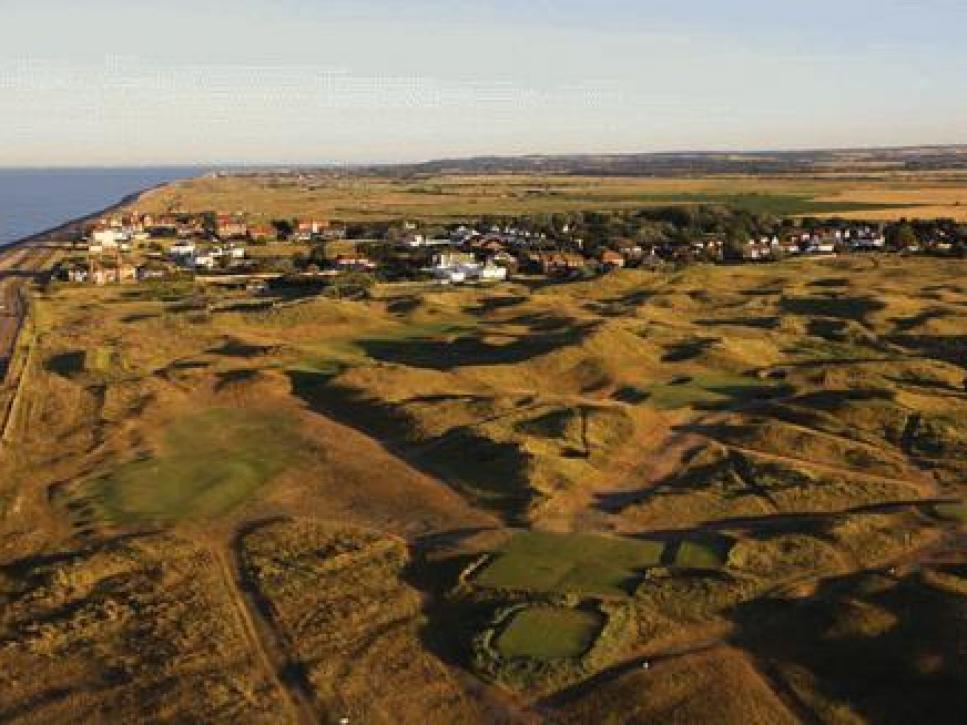The Loop
Royal St. George's emphasizes the chess match of links golf
SANDWICH, England -- Going into this 140th Open Championship, the common view amongst the 156-strong field seems to be that the Royal St. George's course is close to perfection, both in its conditioning and its setup.
"I'm really enjoying the golf course," said Phil Mickelson, neatly summing up the opinion of the vast majority. "I am very excited about the way the course is playing and the way it is set up. I think it is really fun out there."

*(Photo by Steve Szurlej)
Even the officials are purring away contentedly in the background.
"The amount of rough we have out there is pretty close to what we would ideally like," agreed Peter Dawson, chief executive of the R&A. "These are good playing conditions. We're happy with it all."
Such a consensus is rare at any major championship, especially within such a large gathering of top-class golfers. By dint of their elevated status, each tends to have their own terribly well-informed (!) opinions on the esoteric subjects of turf management and fairway widths.
Those factors are important though, particularly on a seaside links, where the eternal vagaries of the weather play such a key role in dictating how these talented individuals will tackle each of the 18 holes here on the Kent coast. Dawson, in fact, was quick to admit that more than a few tees could be "moved up" in certain wind conditions just so that the players can reach the fairways, never mind hit them.
How much of the course is covered in short grass and how much is rough also plays a huge part in determining the level of scoring in an Open Championship. Last time at Royal St. George's, the long grass was very long indeed -- and very thick. Which was fine until it became clear that any ability a player may have to hit from the rough was useless. Everyone -- no matter his level of expertise -- was reduced to the same, hack-out level, able to hit the ball no more than 50 yards or so.
This time around, things will hopefully be different. With the rough manageable, those with greater expertise should be able to separate themselves from their competition. In other words, the more proficient player will be better able to extricate himself from the longer grass, perhaps even to the extent that he will be able to hit the green from spots others cannot. Which is as it should be, of course.
It is likely also, that some of the more thoughtful -- and accurate -- competitors will deliberately drive into the edge of the rough on some of the longer holes that are playing into the wind. Padraig Harrington is one of those who has long been alive to the possibility of such a tactic.
"If I can drive into the semi-rough off the tee, I'm likely to get a 'flier' lie," explains the two-time Open champion. "From there, I'll be able to hit my next shot much farther than I would from the fairway. When the grass gets between the clubface and the ball, less spin is imparted and I'll be able to run the ball onto greens that would have been out of reach otherwise."
The width of the playable areas -- fairway and areas of rough that are not overly penal -- is also a key element in what is one of the most interesting aspects of "proper" links golf. Because the ground on and around the greens is much firmer than you would typically find on the PGA Tour, approach shots often have to land short of the putting surfaces and run up to the flag. Especially when struck from the rough, a ball landing on a firm green is unlikely to stop before it goes too far.
That fact makes the positioning of the drive even more important than usual. The creation of a proper angle into the flag for the approach shot is, barring a fluke, the only way for a player to consistently create birdie chances. Those who miss on the "wrong" side will invariably be struggling to make par. Or so goes the theory at least.
Around the greens, a bit of imagination is going to be called for. Typically, short grass is the hazard of choice on a links when a player misses with his approach shot. In other words, rather than an easy (flop) shot from a difficult lie in long grass, the player is going to be faced with a difficult shot from an easy lie. Which is one of the greatest things about links golf. There is nothing more fascinating than watching a really good player figuring out his best option from a choice of maybe five when he has missed a green.
Many of those options will involve keeping the shot low to the turf, which will delight those links aficionados who feel that golf becomes more and more interesting the longer the ball is on the ground. And, perhaps more to the point, those with the wider range of shot will yet again have an advantage -- just as it should be when we're talking links golf at its best.
-- John Huggan